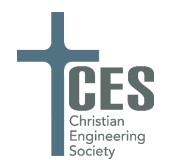Document Type
Paper
Abstract
The ABET student outcomes require that engineering programs assess students’ ability to consider public health, safety, and welfare, as well as global, cultural, social, environmental, and economic factors in engineering design. Furthermore, students must demonstrate their ability to consider the impact of engineering solutions in global, economic, environmental, and societal contexts. While these requirements may initially feel like a burden, at least in the sense that more is required in program assessment, they present an opportunity for Christian engineering programs to further emphasize their distinctive approach to educating engineers. Incorporating these important topics into the curriculum in a meaningful way leads to organic connections between Christian faith and engineering practice. In this paper, one engineering program at a small Christian institution shares its approach to incorporating healthy discussion around these ideas, including assessment of student understanding, into the culminating design experience.
Creative Commons License

This work is licensed under a Creative Commons Attribution-Noncommercial-No Derivative Works 4.0 License.
Copyright
© 2024 Philip P. Graybill. All rights reserved.
Incorporating ABET Student Outcomes 2 and 4 into Christian Engineering Curricula
The ABET student outcomes require that engineering programs assess students’ ability to consider public health, safety, and welfare, as well as global, cultural, social, environmental, and economic factors in engineering design. Furthermore, students must demonstrate their ability to consider the impact of engineering solutions in global, economic, environmental, and societal contexts. While these requirements may initially feel like a burden, at least in the sense that more is required in program assessment, they present an opportunity for Christian engineering programs to further emphasize their distinctive approach to educating engineers. Incorporating these important topics into the curriculum in a meaningful way leads to organic connections between Christian faith and engineering practice. In this paper, one engineering program at a small Christian institution shares its approach to incorporating healthy discussion around these ideas, including assessment of student understanding, into the culminating design experience.

